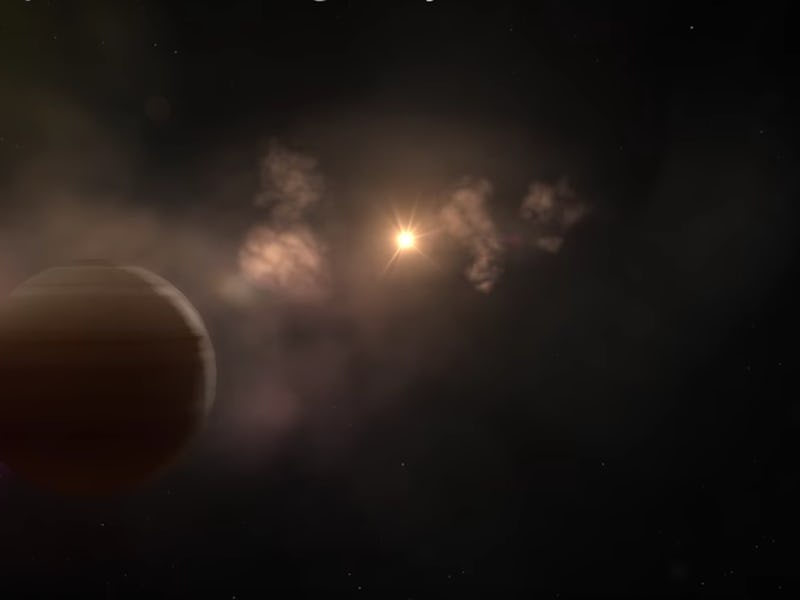This "Winking" Star is So Hungry it's Feasting on Planets
An appetite of galactic proportions.

With the help of high-power telescopes, scientific measurements, and a little creativity, astronomers can usually understand what’s going on in the cosmos hundreds of light-years away. Of course, there will always be some anomalies, that’s how the story of the star RZ Piscium beings.
This star is 550 light-years away in the constellation Pisces and has been “winking” at astronomers since they’ve discovered it.
From Earth, the star seemed to dim and then brighten up again in erratic cycles that could last for up to two days. In a paper published Thursday in The Astronomical Journal, a team of U.S. astronomers explain that this sporadic “winking” is caused by the star’s insatiable appetite for other planets.
By measuring the energy radiating from the star, the team of researchers discovered that a significant portion of the lightwaves coming from RZ Piscium are infrared. This suggests it’s surrounded by a giant cloud of space dust.
When stars are born, gravity mashes massive amounts of gas and dust into a insanely hot orb. During this process, a gigantic cyclone of particles forms around this new star. So it makes sense newborn stars would have clouds of dust around them — but RZ Picsium isn’t a baby star at all.
Astronomers observing the star found that it’s extremely rich in lithium. Stars only start developing that much lithium after they’ve been around for a few million years.
According to their estimates, RZ Picsium is roughly 30 to 50 million-years-old, which is way too old to still have its original cloud of dust around it. This means the cloud surrounding the star has to come from other sources.
“Most sun-like stars have lost their planet-forming disks within a few million years of their birth,” said team member Ben Zuckerman, an astronomy professor at the University of California in a statement. “The fact that RZ Piscium hosts so much gas and dust after tens of millions of years means it’s probably destroying, rather than building, planets.”
While they don’t have a concrete answer, the team came up with two possible explanations. The debris could have come from planets in the star’s orbit crashing into each other and being swallowed up by RZ Picsium. Or the star’s gravitational pull is stripping parts of the planets that surround it.
In times like these, we’re thankful that our sun isn’t starving.